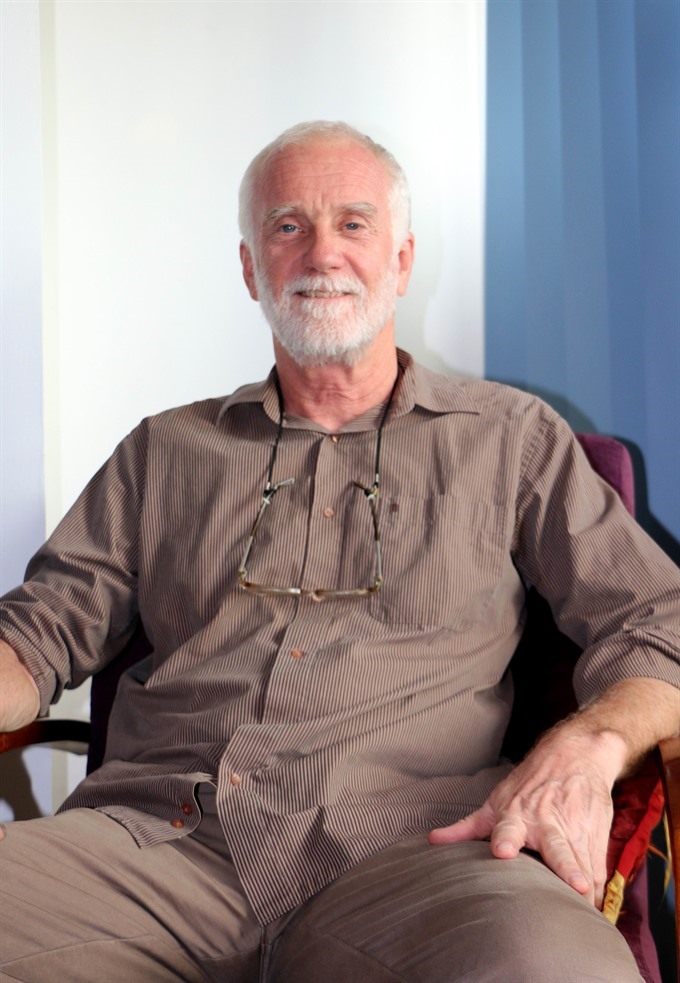Viet Nam News
by Minh Thu
American psychotherapist Douglas Holwerda, whose primary work is talk therapy for those who are dealing with life problems or mental health issues, never planned to move to Viet Nam—but now he’s lived here since 2011.
Holwerda, first came to Viet Nam as a visitor in 2008. His niece was living in Vung Tau and had just given birth to her first child, so he stayed for a month and began to love the way of life in Viet Nam.
He returned to Viet Nam in 2009 and moved to Ha Noi in 2011, when he started working as a psychotherapist at Family Medical Practice and as a teacher of psychology at Griggs University. Soon he co-founded the Hanoi Counseling Psychology Group.
When he looks back on a decade of experience here, he still remembers his first impressions of Viet Nam—how hot it was and how people driving motorbikes filled the streets.
“I do remember that I felt comfortable and welcome,” he adds.
“Now that I have lived in Viet Nam for a fairly long time, all the things that seemed so amazing to me because they were so different than what I was accustomed to have become more natural,” he said. “But I still sometimes feel amazed and see life here as an adventure.”
“It is difficult to explain, but I feel a kind of freedom here that I do not feel in the US”.
The once-daunting motorbike traffic has become a source of joy for him.
“Motorbike travel is so much better than sitting in a car stopped at a red light in a long line of traffic so familiar in Seattle, where I am from,” he says. “I love taking trips into the countryside to see the beauty and simple life that still exists”.
Living here has also enabled him to explore and grow within his profession, as he forms connections and introduces new psychotherapy programmes for Hanoians.
He has recently started offering a lecture series on “Empowerment”, designed to increase participants’ awareness of basic principles used in psychotherapy so that can they can better know themselves, relate to others and find their place in the world.
 |
| Psychotherapist Douglas Holwerda. — VNS Photo Doan Tung |
Dancing therapy helps cure
Holwerda feels very strongly about the creative process. He stresses that one of the ways that people find healing is through creative expression and a playful attitude. “It helps us to live in our bodies, to be present, to explore new and different aspects of ourselves, overcome inhibitions, to connect with others and to enjoy living life.”
“I almost always feel better after I have participated in some creative activity, whether it is dance and movement or singing or painting or just playing. I think it has value for all people and I am happy when I see those who try it and discover some joy in the process. So many people think, ‘I am not creative.’ But don’t realise that they really are if they let go and enjoy experimenting with new things.”
Over the past few years Holwerda has organised many workshops and lectures about this type of therapy, along with dancer Bui Tuyet Minh, the leader of the Dance/Movement therapy group in Ha Noi.
He developed “Creative Play”, which is now part of the Dance/Movement therapy group, in Seattle 25 years ago with some university colleagues. They decided to ask the question “What is creativity?” and attempted to answer it by exploring different mediums like movement, sounding, painting and role-playing.
They experimented with it together for six years almost every week and came to see it as a way to learn how to be spontaneous, less inhibited and more light-hearted. They could also see that it rubbed off onto other aspects of their lives.
Over the past few years Holwerda and his partners in the Dance/Movement group have introduced these ideas to interested people in a series of workshops. He said, “I love to see people playing with movement and sound. It is amazing to see how fun it is to explore the corners of what is possible. I also love to play with balloons… they almost always bring a smile to those who are playing with them.”
Holwerda leaves Viet Nam every summer to visit his family, including his mother who happily lives in Michigan at the age of 89. He spends the rest of the year in Viet Nam to offer support and help people who are dealing with the problems of life.
“For me the creative side of myself keeps me in touch with my inner child, free to be spontaneous and find joy in the simple things of life. I feel empowered to just be myself. I also think it helps me be a better psychotherapist, present to others in ways that are helpful.” — VNS